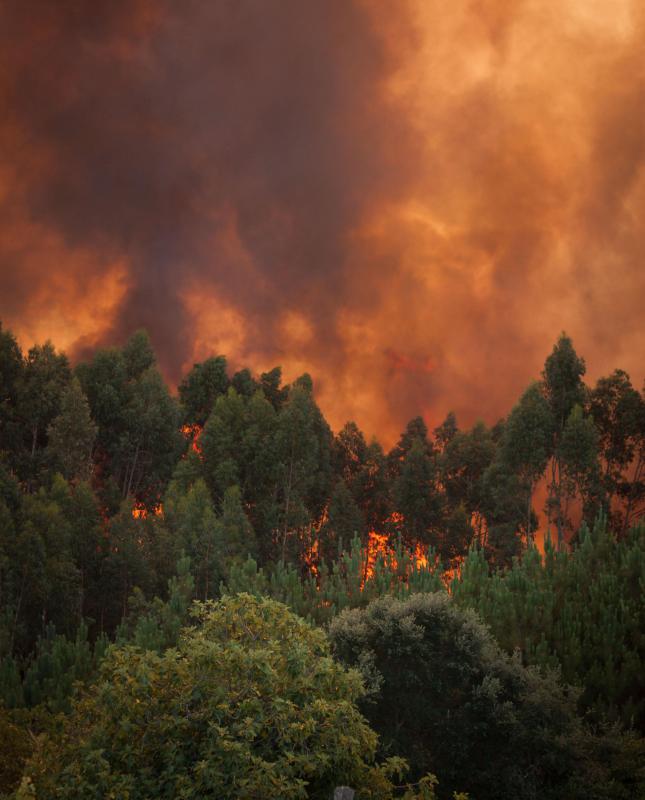What is Dry Lightning?
 Mary McMahon
Mary McMahon
Dry lightning is lighting which strikes without any accompanying rain. Obviously, “dry” lightning is a bit redundant, since lightning is not usually particularly wet, but the term has caught on because it is so descriptive. The Western region of the United States is famous for its dry lightning, which sparks hundreds of wildfires each year, some of which grow to be dangerously large.
In a normal thunderstorm, lightning strikes while rain falls from the stormclouds, usually accompanied by the sound of thunder. When the lightning hits the ground, it may cause a spark of flame, but the rain which comes down with the lightning puts the fire out before it has a chance to spread. In a dry storm, rain is produced, but it never reaches the ground.

In many Western states, storms tend to form extremely high, which means that the rain may pass through a zone of warm air on its way to the ground. The dry, warm air causes the rain to evaporate, returning the cloud and fueling the storm while also ensuring that it does not hit the ground to put out fires caused by lightning strikes. Such storms are also often accompanied by dry microbursts, gusts of cold air which rush down from the clouds and spread rapidly when they hit the ground, causing gusting winds along the surface of the Earth.

As one might imagine, dry lightning and dry microbursts can be a recipe for disaster. Even as the lightning strikes the ground to spark a fire, a gust of wind can push the margins of the fire, causing it to spread rapidly. In areas where groundcover and forests are not well managed, explosive fire conditions can emerge during dry lightning storms, quickly covering ground and sometimes even trapping firefighting personnel.
Generally, the risk of dry lightning can be predicted in advance, with meteorologists using existing data to predict dry thunderstorms. In these instances, warnings may be issued to alert people to the fire risk, and the risk of unpredictable storms leads many communities to encourage citizens to create firebreaks around their homes by keeping ground cover down, and grass tightly trimmed. In areas where dry lightning is especially common, building codes may also include built-in fire protections, to make structure fires less likely.
AS FEATURED ON:
AS FEATURED ON:












Discussion Comments
I found this to be very interesting as I live in Missouri and have seen dry lightning. I never understood it because there was no rain involved. It has occurred several times this last couple of weeks. It this also what it called a bolt out of the blue?
Post your comments